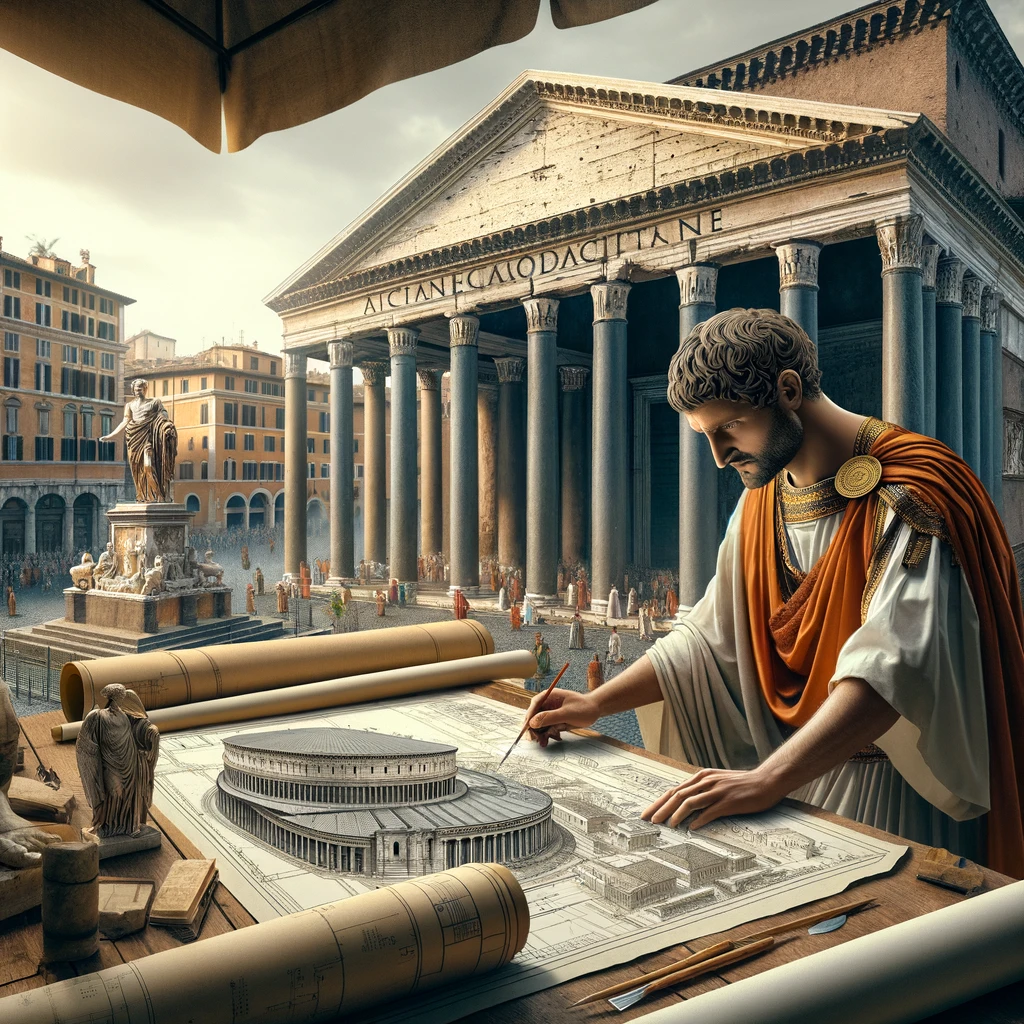
The Architect Emperor
Hadrian, Rome’s 14th emperor, ruled from AD 117 to 138, leaving behind a legacy not just of power but of architectural and cultural significance. Unlike many of his predecessors, Hadrian preferred peace to war, focusing on strengthening the empire’s infrastructure and leaving a mark as a builder whose projects have endured millennia.
1. A Traveler at Heart
Hadrian was renowned for his extensive travels across the Roman Empire. Unlike other emperors who governed from Rome, he visited almost every province, understanding the local cultures and needs, which influenced his architectural endeavors.
2. The Hadrian’s Wall
One of his most famous constructions is Hadrian’s Wall in Britain, built to demarcate the Roman Empire’s boundaries and protect it from the northern tribes. This 73-mile-long fortification is a testament to his commitment to Rome’s security and architectural vision.
3. Architectural Innovations
Hadrian’s reign brought about significant architectural innovations. He favored the Roman dome and used it in many of his constructions, leading to the development of structures like the Pantheon, which boasts the world’s largest unreinforced concrete dome.
4. The Pantheon: A Masterpiece
The Pantheon in Rome, rebuilt under Hadrian’s orders, is one of the best-preserved of all Ancient Roman buildings and a pinnacle of Roman engineering. Its dome, oculus, and harmonious proportions exemplify Hadrian’s architectural ambition and skill.
5. A City in His Name: Hadrianopolis
In what is now modern-day Turkey, Hadrian founded the city of Hadrianopolis. This city, among others, served as a hub for cultural exchange and architectural experimentation under his rule.
6. Villa Adriana: A Retreat for the Emperor
The Villa Adriana (Hadrian’s Villa) near Tivoli was a vast countryside retreat for the emperor. This complex included over 30 buildings: palaces, libraries, baths, and theaters, reflecting Hadrian’s tastes and intellectual interests.
7. A Patron of the Arts
Hadrian was a great patron of the arts, surrounding himself with poets, artists, and philosophers. His reign is marked by a revival of Greek culture and influence, evident in the sculptures and artworks commissioned during his time.
8. Hadrian and Athens
His love for Greek culture led to significant contributions to Athens’ architectural landscape. Hadrian completed the Temple of Olympian Zeus, a project that took over 700 years to finish, and constructed the Library of Hadrian, among other structures, blending Roman and Greek architectural styles.
9. Legal Reforms and Philanthropy
Beyond architecture, Hadrian is known for his legal reforms and efforts to humanize criminal laws. He established cities for the retired military, improved the empire’s infrastructure, and engaged in philanthropy.
10. A Controversial Relationship
Hadrian’s personal life, especially his relationship with Antinous, has intrigued historians. After Antinous’ mysterious death, Hadrian deified him, founding a city in his memory and erecting statues across the empire.
11. Religious Tolerance and Policies
Hadrian is noted for his policies of religious tolerance, although his reign also saw the Bar Kokhba revolt, a significant Jewish uprising in Judea, which led to a heavy Roman crackdown.
12. An Emperor of Peace
Preferring negotiation and diplomacy over warfare, Hadrian’s reign was marked by relative peace and stability, focusing on consolidating and securing the empire’s borders.
13. Hadrian’s Succession Plans
His succession plans reflected his vision for Rome’s future. Hadrian adopted Antoninus Pius on the condition that he, in turn, would adopt Marcus Aurelius and Lucius Verus, ensuring a line of capable rulers.
14. A Multifaceted Legacy
Hadrian’s legacy is multifaceted, encompassing architecture, law, the arts, and military strategy. His reign exemplifies the complexities of Roman imperial power and the enduring impact of visionary leadership.
15. An Enduring Influence
Today, Hadrian’s architectural innovations and cultural contributions remain influential, symbolizing the richness of Roman history and the enduring power of thoughtful governance and design.
Hadrian’s tenure as emperor is a fascinating blend of architectural brilliance, cultural patronage, and strategic governance. His passion for architecture, coupled with his intellectual curiosity and desire for peace, left a lasting imprint on the Roman Empire, echoing through history as an enduring testament to his visionary leadership.



